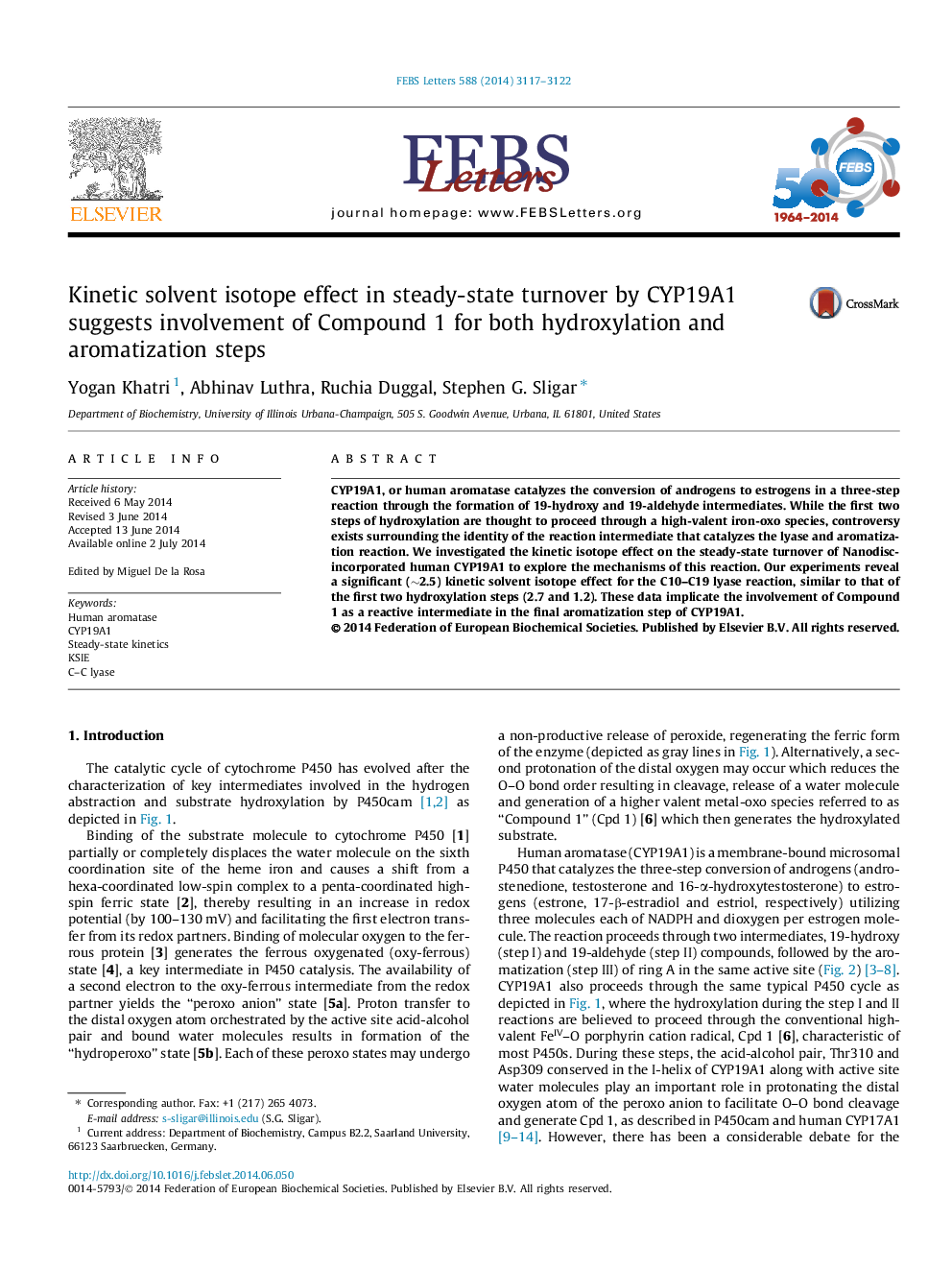| کد مقاله | کد نشریه | سال انتشار | مقاله انگلیسی | نسخه تمام متن |
|---|---|---|---|---|
| 10870183 | 1073992 | 2014 | 6 صفحه PDF | دانلود رایگان |
عنوان انگلیسی مقاله ISI
Kinetic solvent isotope effect in steady-state turnover by CYP19A1 suggests involvement of Compound 1 for both hydroxylation and aromatization steps
دانلود مقاله + سفارش ترجمه
دانلود مقاله ISI انگلیسی
رایگان برای ایرانیان
موضوعات مرتبط
علوم زیستی و بیوفناوری
علوم کشاورزی و بیولوژیک
دانش گیاه شناسی
پیش نمایش صفحه اول مقاله

چکیده انگلیسی
CYP19A1, or human aromatase catalyzes the conversion of androgens to estrogens in a three-step reaction through the formation of 19-hydroxy and 19-aldehyde intermediates. While the first two steps of hydroxylation are thought to proceed through a high-valent iron-oxo species, controversy exists surrounding the identity of the reaction intermediate that catalyzes the lyase and aromatization reaction. We investigated the kinetic isotope effect on the steady-state turnover of Nanodisc-incorporated human CYP19A1 to explore the mechanisms of this reaction. Our experiments reveal a significant (â¼2.5) kinetic solvent isotope effect for the C10-C19 lyase reaction, similar to that of the first two hydroxylation steps (2.7 and 1.2). These data implicate the involvement of Compound 1 as a reactive intermediate in the final aromatization step of CYP19A1.
ناشر
Database: Elsevier - ScienceDirect (ساینس دایرکت)
Journal: FEBS Letters - Volume 588, Issue 17, 25 August 2014, Pages 3117-3122
Journal: FEBS Letters - Volume 588, Issue 17, 25 August 2014, Pages 3117-3122
نویسندگان
Yogan Khatri, Abhinav Luthra, Ruchia Duggal, Stephen G. Sligar,